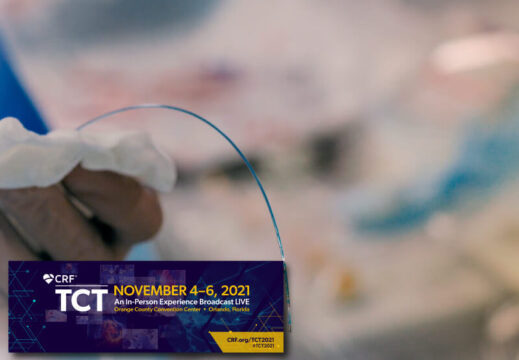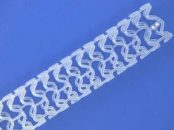In CAD patients with diabetes the polymer-free amphilimus-eluting stent resulted non-inferior to the polymer-based zotarolimus-eluting Resolute Onyx. This new device, in addition to ultrathin struts, has already been found non-inferior to the Resolute Integrity in the general population at 3-year followup. Researchers believe that the new amphiphilic carrier might be especially useful in diabetic patients…
Biodegradable Polymer Myth Also Debunked for ACSs
During TCT 2020 a preview of the results of the comparison of drug-eluting stents (DES) with biodegradable-polymer vs. durable-polymer in patients with acute coronary syndrome (ACS) was presented. The fine print and the final paper for HOST-REDUCE-POLYTECH-ACS are now published, and they lower the expectations set on biodegradable polymers. In patients with ACS undergoing angioplasty, biodegradable-polymer…
TCT 2020 | The Myth of Biodegradable Polymers Seems to Have Come to an End
This is the largest and newest study to compare drug eluting stents with durable polymers vs. biodegradable or bioresorbable polymers. As is usually the case, the theory clashes with reality. The study has shown that the polymer does not seem to play an important role in the performance of drug eluting stents, or at least…
ISAR-TEST-5: 10 años de los DES con polímero vs sin polímero
After 10 years, unstable or chronic coronary patients revascularized with drug-eluting stents (DES) had similar, very good outcomes regardless of whether the DES did or did not have a polymer, according to the ISAR-TEST-5 study, recently published in J Am Coll Cardiol. The 10-year device-oriented endpoints occurred in 43.8% of patients treated with a polymer-free sirolimus-eluting…
Onyx ONE: More Options for Patients at High Risk for Bleeding
Since November 2015, when the LEADERS FREE was published in NEJM, polymer-free drug coated stents had undoubtedly been the best treatment for patients at high risk of bleeding. The benefit was owed to the safety and efficacy of the polymer-free biolimus coated stent (also called umirolimus) vs. bare metal stents in the context of just…
TCT 2019 | IDEAL-LM: Bioabsorbable Polymer DES vs. Permanent Polymer DES for Left Main Stenosis
Courtesy of SBHCI. This study showed that using the everolimus eluting stent with bioabsorbable polymer Synergy followed by 4 months of dual antiplatelet therapy (DAPT) to treat left main stenosis (LMS) was safe and effective, compared against using the everolimus eluting stent with permanent polymer Xience followed by the conventional 12 months DAPT. This study…
TCT 2019 | Onyx ONE: Durable Polymer vs. Polymer-Free Stent with Only One Month of Dual Antiplatelet Therapy
Courtesy of the SBHCI. This is the first randomized study comparing a durable-polymer drug-eluting stent (zotarolimus-eluting stent Onyx) and a polymer-free drug-eluting stent (biolimus-A9-coated stent BioFreedom), with only one month of dual antiplatelet therapy in patients at high risk for bleeding. Onyx ONE was a study conducted at 84 sites that randomized 1:1 2000 total patients at…
Do Polymers Play any Role in Drug Eluting Stents
The fact that polymers can degrade after drug release seems interesting, more so when there appears to be evidence that they might cause inflammation (manly eosinophil infiltration) given its unwanted consequences. However, nice theories often get a reality check, and the polymer discussion is no exception. This article, soon to be published in J Am…
Everolimus-Eluting Stents Finally Have a Rival and Not Just a “Non-Inferior” Stent
In this large randomized trial, there were significant differences as regards both target-lesion failure and target-vessel-related infarction, which persisted through a 2-year follow-up and favored treatment with an ultrathin-strut bioresorbable-polymer sirolimus-eluting stent (Orsiro) compared with the gold standard, a durable-polymer everolimus-eluting stent (Xience). Moreover, there were significantly lower rates of target lesion revascularization and late/very…
TCT 2018 | BIONYX: Durable Polymer-Coated vs. Ultrathin-Strut, Bioresorbable Polymer-Coated DES
This work, presented at TCT 2018 and published simultaneously in The Lancet, is the first randomized study comparing a zotarolimus-eluting stent with a new thin-strut structure and limited radiographic visibility (Onyx), and a bioresorbable polymer-coated sirolimus-eluting stent (Orsiro). Onyx was developed to improve visibility while reducing strut thickness. To that end, a dense platinum–iridium core and…








